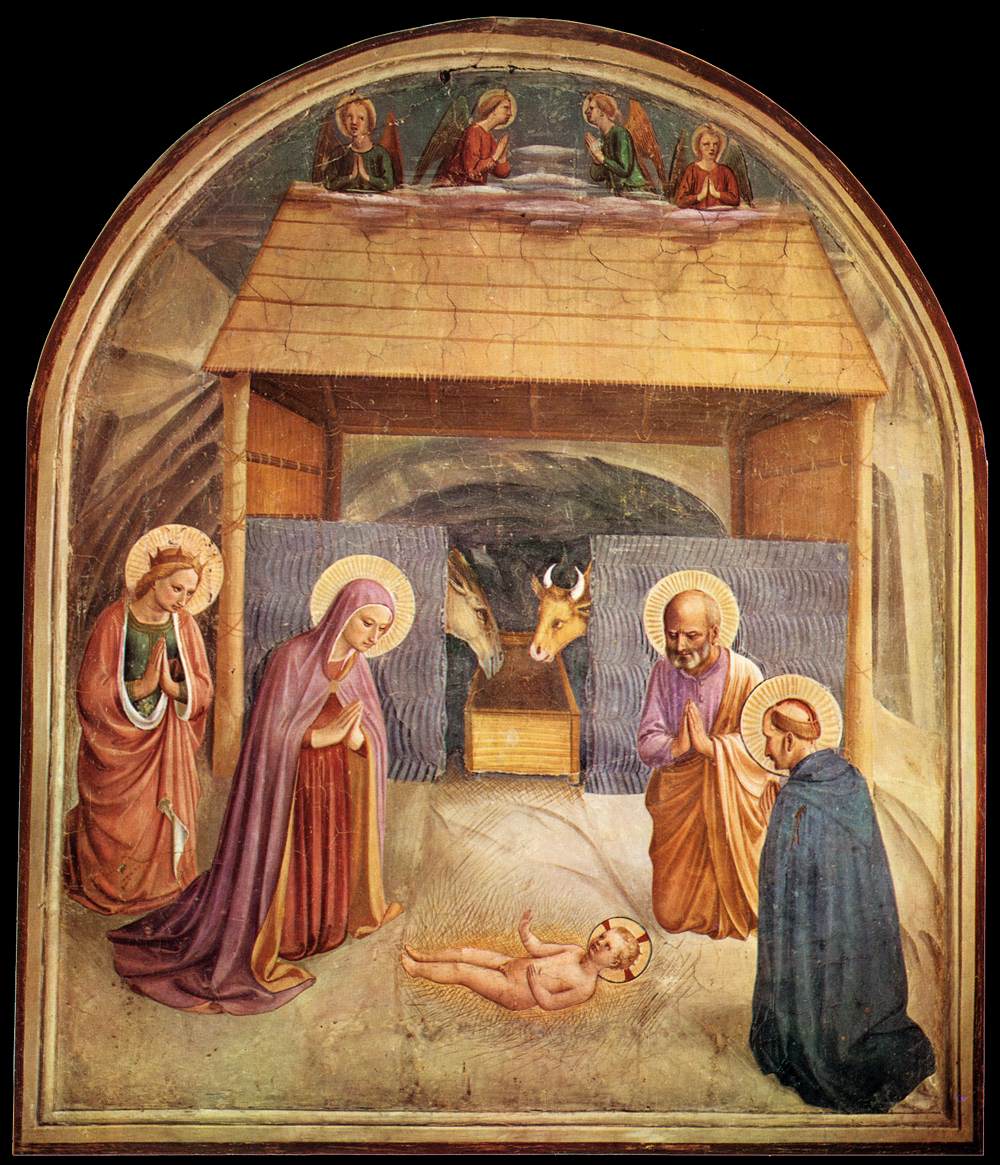St. Bridget of Sweden (Birgitta Birgersdotter, 1303 – 23 July 1373) is commemorated by Traditionalist Catholics on 8 October. Today, she is the patron of Sweden, one of the six patrons of Europe and a patron of widows.
Even at an early age she started having visions of the Crucifixion, yet she only pursued a religious life after following a pilgrimage to Santiago de Compostela, Spain, in 1341, after the loss of her husband, Ulf Gudmarsson, with whom she had eight children and who later in his life had become a Cistercian monk. In 1346, she managed to found the Order of the Most Holy Saviour, or the Brigittines, at Vadstena, Sweden, which in 1370 was confirmed by Pope Urban V, and survives up to this day. She died in Rome in 1373 having made pilgrimages to Jerusalem and Bethlehem, and was canonized in 1391 by Pope Boniface IX.
A vision of nativity St. Bridget had in Bethlehem had a tremendous influence on Italian art and, generally, the iconography of the scene – the naked and glowing baby Jesus, the manger and the kneeling Mary and Joseph, for instance. She had been recording her visions and revelations in Revelationes coelestes (“Celestial revelations”). It is also said that the Florentine painter, Niccolò di Tommaso, probably, met Saint Bridget in Naples around 1372.
In her revelations, St. Bridget of Sweden writes about vision of the Nativity:
And so sudden and momentary was that manner of giving birth that I was unable to notice or discern how or in what member she was giving birth. But yet, at once, I saw that glorious infant lying on the earth, naked and glowing in the greatest of neatness. His flesh was most clean of all filth and uncleanness. I saw also the afterbirth, lying wrapped very neatly beside him. And then I heard the wonderfully sweet and most dulcet songs of the angels. And the Virgin’s womb, which before the birth had been very swollen, at once retracted; and her body then looked wonderfully beautiful and delicate.
When therefore the Virgin felt that she had now given birth, at once, having bowed her head and joined her hands, with great dignity and reverence she adored the boy and said to him: “Welcome, my God, my Lord, and my Son!” And then the boy, crying and, as it were, trembling from the cold and the hardness of the pavement where he lay, rolled a little and extended his limbs, seeking to find refreshment and his Mother’s favor. Then his Mother took him in her hands and pressed him to her breast, and with cheek and breast she warmed him with great joy and tender maternal compassion.
Then, sitting on the earth, she put her Son in her lap and deftly caught his umbilical cord with her fingers. At once it was cut off, and from it no liquid or blood went out. and at once she began to wrap him carefully, first in the linen cloths and then in the woolen, binding his little body, legs, and arms with a ribbon that had been sewn into four parts of the outer wollen cloth. And afterward she wrapped and tied on the boy’s head those two small linen cloths that she had prepared for this purpose.
When these things therefore were accomplished, the old man entered; and prostrating on the earth, he adored him on bended knee and wept for joy. Not even at the birth was that Virgin changed in color or by infirmity. Nor was there in her any such failure of bodily strength as usually happens in other women giving birth, except that her swollen womb retracted to the prior state in which it had been before she conceived the boy. Then, however, she arose, holding the boy in her arms; and together both of them, namely, she and Joseph, put him in the manger, and on bended knee they continued to adore him with gladness and immense joy.
[Saint Bridget of Sweden, The Prophecies and Revelations of Saint Bridget (Birgitta) of Sweden, Book 7 (The Book of Pilgrimage 1372-1373), Chapter 21, English online edition, see Latin text here.]
Further reading:
Aili, H. & Svanberg, J., Imagines Sanctae Birgittae. The Earliest Illuminated Manuscripts and Panel Paintings Related to the Revelations of St. Birgitta of Sweden. Stockholm: The Royal Academy of Letters, History and Antiquities. 2003.
Nirit Ben-Aryeh Debby, “The images of Saint Birgitta of Sweden in Santa Maria Novella in Florence”, Renaissance Studies, Vol. 18, No. 4, pp. 509-526.
The revelations of St. Birgitta of Sweden, translated by Denis Searby, with introductions and notes by Bridget Morris, 4 vols., Oxford: Oxford University Press, 2006-2015.
Andrea di Bonaiuto da Firenze, “Queen Joan of Naples, Catherine of Sweden, Birgitta of Sweden and Lapa Acciauoli” detail from Via Veritatis, The Church as the Path to Salvation, 1366-67, Fresco, Spanish Chapel (east wall), Santa Maria Novella, Florence.
Niccolò di Tommaso, St Bridget and the Vision of the Nativity, after 1372, Tempera on wood, 44 x 54 cm, Pinacoteca, Vatican.
Niccolò di Tommaso, Triptych of Saint Bridget’s Vision of the Nativity, c. 1375-1376, Tempera and tooled gold on panel with vertical grain, Philadelphia Museum of Art.
Giovanni di Paolo di Grazia, The Nativity, Pinacoteca, Vatican.
Fra Angelico, The Nativity, 1439-1443, Fresco (Cell 5), Convent of San Marco, Florence.
St. Birgitta of Sweden’s Revelations, manuscript, Kungl. biblioteket, National Library of Sweden.





